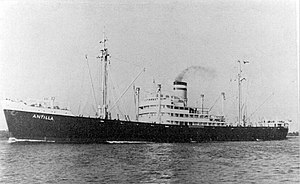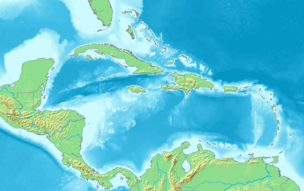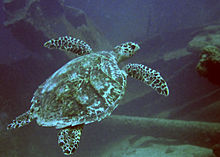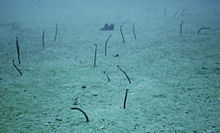HMS Audacity was a British escort carrier of the Second World War and the first of her kind to serve in the Royal Navy. She was originally the German merchant ship Hannover, which the British captured in the West Indies in March 1940 and renamed Sinbad, then Empire Audacity. She was converted and commissioned as HMS Empire Audacity, then as HMS Audacity. She was torpedoed and sunk by a German U-boat in late 1941.

SS Thistlegorm was a British cargo steamship that was built in North East England in 1940 and sunk by German bomber aircraft in the Red Sea in 1941. Her wreck near Ras Muhammad is now a well-known diving site.

Tango Maru (丹後丸) was a cargo motor ship that was built in Germany in 1926 and sunk off the coast of Bali in 1944. She was launched as Rendsburg for the Deutsch-Australische Dampfschiffs-Gesellschaft (DADG), which in 1926 merged with Hamburg-Amerikanische Packetfahrt-Actien-Gesellschaft (HAPAG).
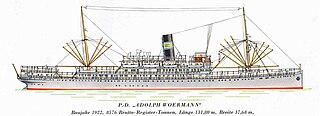
Adolph Woermann was a German steam ocean liner built in 1922 by Blohm & Voss in Hamburg for the shipping lines Woermann-Linie (WL) and German East Africa Line and named after German merchant, ship owner and politician Adolph Woermann, and the fourth ship of the same name.

SS 's Jacob was a passenger steamship that was launched in the Netherlands in 1907 and sunk by enemy action off New Guinea in 1943. She spent most of her career with Koninklijke Paketvaart-Maatschappij, based in the Dutch East Indies.
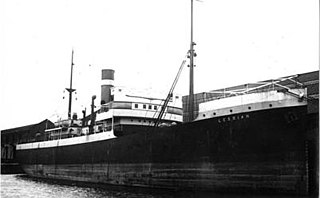
Lesbian was a 2,352 GRT cargo ship which was built by Swan, Hunter and Wigham Richardson Ltd, Newcastle upon Tyne in 1923 for Ellerman Lines Ltd. She was seized in 1940 by the Vichy French forces.
Dollart was a 535 GRT coaster that was built in 1912 by Stettiner Oderwerke AG, Stettin, Germany for German owners. She was seized by the Allies in May 1945, passed to the Ministry of War Transport (MoWT) and was renamed Empire Constancy. In 1947, she was sold into merchant service and renamed Polzeath. In 1951, she was sold to Turkey and renamed Meltem. Further sales saw her renamed Yener 9 in 1956 and Yarasli in 1959. She went missing in the Ionian Sea in January 1961.
SS Orizaba was a Hamburg America Line (HAPAG) cargo ship that was built in Hamburg 1939 and wrecked off northern Norway in 1940.
SS Binnendijk was a Holland America Line (NASM) cargo steamship. She was one of NASM's "B" class ships: the company's first cargo ships to be powered by steam turbines. Binnendijk was built in South Holland in 1921, and sunk by a mine in the English Channel in 1939. She was the first ship that NASM lost in the Second World War. Her wreck off the coast of Dorset, England is now a wreck diving site, nicknamed "The Benny".
SS Abukir was a British coastal steamship that was launched in 1920 as SS Island Queen and renamed in 1934 as SS Kyle Queen. In 1935 she was renamed Abukir and registered in Egypt. In May 1940 she was torpedoed and sunk in the North Sea while evacuating UK and Belgian soldiers, airmen and civilians from Ostend on the last day of the Battle of Belgium.

SS Karsik was a German-built cargo steamship. Deutsche Schiff- und Maschinenbau (Deschimag) built her as Soneck for Deutsche Dampfschifffahrts-Gesellschaft "Hansa" in 1938.
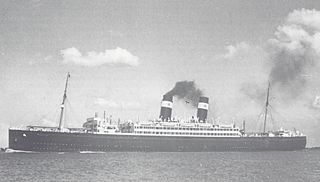
SS Pennland was a transatlantic ocean liner that was launched as Pittsburgh in Ireland in 1920 and renamed Pennland in 1926. She had a succession of UK, German and Dutch owners and operators. In 1940 she was converted into a troopship.
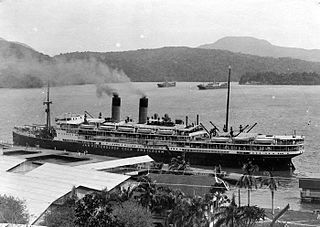
SS Jan Pieterszoon Coen was a Dutch passenger steamship that was launched in 1914. She was named after a former Governor-General of the Dutch East Indies. During the German invasion of the Netherlands in May 1940 she was scuttled as a blockship in the port of IJmuiden, North Holland to prevent the Kriegsmarine from using the port.
SS Santa Fé was a German refrigerated cargo steamship. She is now a Black Sea shipwreck and part of her cargo is of interest to marine archaeologists.
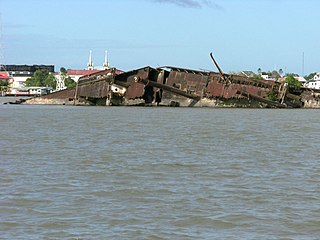
Goslar is a partly-submerged shipwreck in the Suriname River in Paramaribo, Suriname. It is the remains of a Norddeutscher Lloyd (NDL) steam turbine cargo ship that was built in 1929. When the Second World War began in 1939, she sought refuge in Surinam, which was then a Dutch colony. When Germany invaded the Netherlands in 1940, her crew scuttled her.
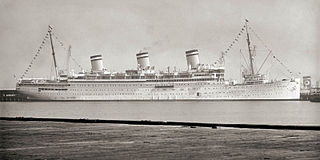
SS Reliance was one of a pair of transatlantic steam ocean liners that were launched in 1914 in Germany for the Hamburg America Line (HAPAG), sold to a Dutch shipping line in 1916, and seized by the United States as World War I reparations in 1922. United American Lines (UAL) operated her until 1926, when HAPAG bought her back.
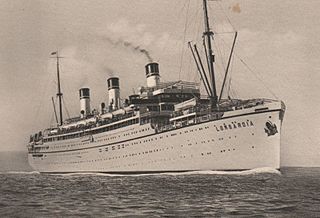
SS Lombardia was one of a pair of transatlantic steam ocean liners that were launched in 1914 in Germany for the Hamburg America Line (HAPAG), sold to a Dutch shipping line in 1916, and seized by the United States as World War I reparations in 1922. United American Lines (UAL) operated her until 1926, when HAPAG bought her back.

Henri Poincaré was a French Navy Redoutable-class submarine of the M6 series commissioned in 1931. She participated in World War II, first on the side of the Allies from 1939 to June 1940, then in the navy of Vichy France until she was scuttled at Toulon in November 1942. The Italians seized her, refloated her, and renamed her FR 118, then scuttled her in September 1943. The Germans later scrapped her wreck.

SS Prinz August Wilhelm was a Hamburg America Line (HAPAG) cargo liner that was launched in Germany in 1902 and scuttled in Colombia in 1918. Her original route was between Hamburg and Mexico. From 1906 she served routes between New York and the Caribbean.
